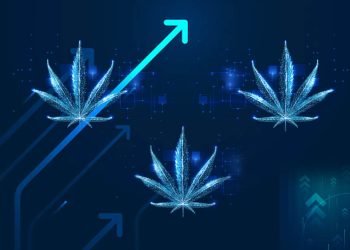The development and usage of advanced technologies in the field of agriculture are occurring at a breakneck pace. The international scientific community has devoted a significant amount of resources and time to developing these technologies to increase yields, produce more nutritious crops, and promote long-term sustainability. In this article, we discuss state-of-the-art technologies as powerful and consistent tools for growth and development in the agriculture sector.
Why does the world desperately need to implement modern technologies for food production?
The agricultural sector faces constraints in land and farming inputs, while the demand for food is growing at an unprecedented rate. The world’s population is expected to touch the 9.7 billion mark by 2050, and the water supply will fall 40% short of meeting global water demands by 2030. Some other food and sustainability issues plaguing the world are – rising energy, labor, and nutrient costs, reducing profit margins, degradation of arable land, and increasing environmental pressures, such as climate change and the economic impact resulting from it.
To address these challenges, the agriculture sector must embrace modern technologies. Undoubtedly, more powerful and efficient machinery and genetic manipulation techniques have been available for a long time. Still, the changing world needs modern and more sophisticated tools, like Artificial intelligence, analytics, connected sensors, and other emerging technologies. Let us now take a deeper look at how modern technologies can deliver the next productivity leap and help farmers optimize yields, become sustainable, and improve profits.
Advantages of modern agricultural technology adoption
Increased Productivity
Modern technology allows farmers to carry out several farm activities with less effort and less time. Advanced Tractors, AgRobots, such as -robotic harvesters and separators, automatic in-row weeders, and many more devices and technologies are being deployed in the fields to increase productivity. AI, machine learning (ML), and IoT sensors can provide real-time data for algorithms to increase the efficiency and productivity of farmers.
Crop protection from humans and animals
Technologies such as surveillance systems based on AI and ML can quickly identify animal or human breaches, alerting farmers immediately to take quick actions. For example, Twenty20 Solutions is an AI-ML-based surveillance system that can secure remote facilities by deterring trespassers using machine learning.
Real-time data to improve crop health
Advanced sensors and drones can collect critical farm data and even offer real-time video streaming. All this information and data can be analyzed with the help of advanced analytics to analyze growth patterns for crops, obtain constraint-based advice for optimizing crop yields, and gain new insights into improving crop health and products.
Reduced wastage and more cost-savings
With the combination of machine learning, social condition data from sensors, 3D mapping, and drone-based data of soil, Agri scientists can now predict the yielding capacity of a soil for a given crop. This eliminates guesswork and leads to increased productivity, reduced wastage, and substantial cost savings.
Less reliance on human laborers
For large-scale agricultural businesses, shortage of qualified and skilled workers is a serious issue impacting their productivity and profits. But now, thanks to robotics and automation, they can cultivate acres of land while also providing an element of security. These robots are capable of performing several tasks, such as distributing fertilizer on each row of crops, which keep the operating costs low while improving field yields.
No supply chain roadblocks
The pandemic led to the widespread adoption of the track-and-trace system, which provides greater visibility and control across supply chains, thus reducing inventory shrinkage. A state-of-the-art track-and-trace system relies on advanced sensors to gain a more excellent knowledge of each shipment’s condition. They also leverage IoT sensors and RFID to streamline performance and improve efficiency.
Decide the optimal mix of pesticides for lesser pollution
AI applications, Intelligent sensors, and visual data streams from drones can help agri specialists to detect a field’s most infected areas. With this information in hand, farmers can decide the optimal mix of pesticides to control pests while reducing chemical pollution in fields.
Better pricing strategies with price forecasting
By understanding the quality levels of crops and yield rates, farmers can get the best possible price for their harvests. This way, agribusinesses, and farmers can save millions of dollars a year in lost revenue.
Efficient utilization of water resources
Water is one of the sparsest and most vital resources for farmers; therefore, its efficient utilization is every farmer’s utmost priority. It is so crucial that its efficient use can mean the difference between staying profitable or not. That said, advanced technologies, such as linear programming enable farmers to estimate the optimal amount of water a given field or crop will need. Machine learning algorithms can be used to estimate how much water fields and crops need to optimize yields.
Conclusion
Growing population, environmental factors, and the need for affordable yet high-quality food have caused the agriculture sector to integrate technology into farm operations slowly. It has a profound impact on-farm productivity and efficiency. Technology has reduced the amount of effort required for farming while giving a new push to long-term sustainability.







